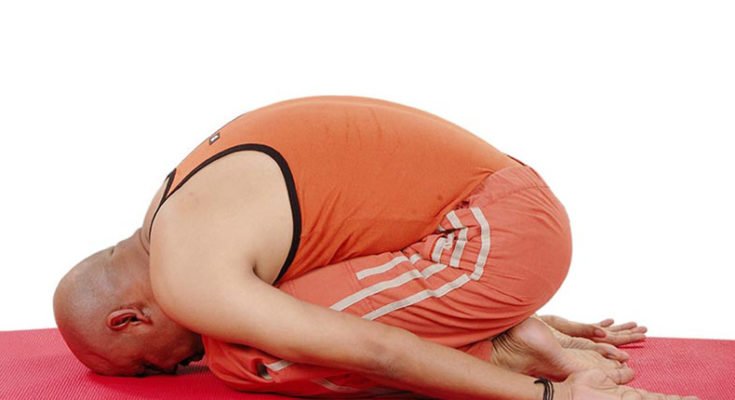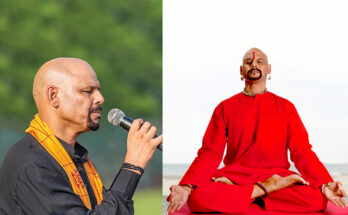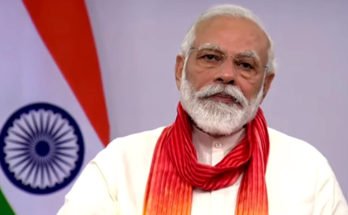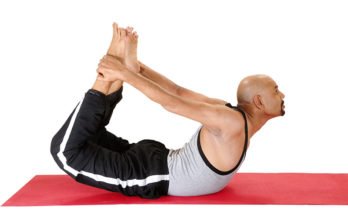Yoga to defy Ageing. Shashank Asana demonstrated by Yoga Guru Suneel Singh. Image Courtesy – Vijay Gautam
Everybody wants to look good, and cosmetics ensure that they give you what you need. In ancient India, yoga and Ayurveda took care of almost every physical well-being aspect you could think of.
Although thousands of years old yoga and ayurveda are still as much valid today as they were back then. Both yoga and ayurveda are natural, side effect free and relatively inexpensive. Ageing is a natural phenomenon and there’s no escape from it. Ancient Indian scriptures say that the type of food you eat directly affects your mind. Eating a bowl of fresh fruits will have completely different effect on your mind and body than eating junk food cannot give the body what a whole ayurvedic diet can provide.
Making wise lifestyle choices will ensure that you stay healthy and live longer. To achieve a good lifestyle pattern, it is important to strike a balance between good food habits, adequate hours of sleep, physical exercises and mental relaxation. Any physical or mental stress will eventually affect the body. A healthy body, a calm mind and an everlasting smile are the real beauty products that will boost your confidence and enhance your personality.
We cannot defy ageing forever but certainly, we can slow down its progress by taking precautions and adopting a better lifestyle. There are many known benefits to the regular practice of yoga, which would help to minimize many of the problems associated with ageing. Regular practice of asana can help to maintain muscle strength and tone and bone density, joint flexibility, and improve posture, balance and maintain mobility. Combined with pranayama, regular practice can help to maintain circulatory and respiratory health. Here are few Yoga abhyas(practice) to be performed on daily basis will delay ageing process.
Read: Winter Yoga working within rhythm of Nature
1. SHASHANGASANA (HARE POSE)
Sit down in Vajarasana, placing the palms on the thighs just above the knees. Now close your eyes and relax, keeping the spine and Head straight. Now inhale and raise the arms above the head, exhale while bending the trunk forward from the hips. Arms and forehead should touch the floor at the same time. Retain in the final position as long as you are comfortable. And then slowly come up. This is one round of this Asana. Practise 3 to 5 rounds. Slowly try to increase the length of time in the final position until you are able to hold it comfortably for at least 3 minutes.
PREVENTION: People those who are suffering from slipped disc, vertigo and very high blood pressure. They should not perform this asana.
2. YOGA MUDRASANA (PSYCHIC UNION POSE)
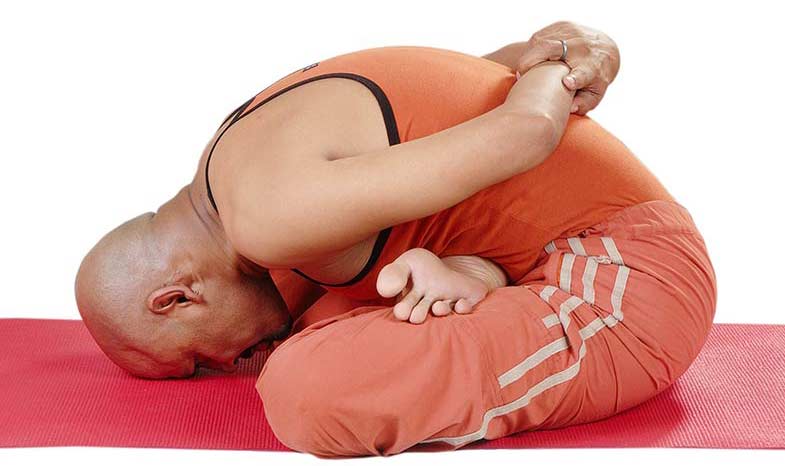
Yoga Mudrasana posture.
Sit down in Padmasana. Now hold one wrist behind the back with the other hand. Inhale deeply, while exhaling, bend forward bring the forehead to the floor or as close as possible. Be aware of the pressure of the heels on the abdomen. Stay in the final position for as long as is comfortable slowly return to the starting position. Repeat the pose with the legs crossed the other way around. Try to remain in the final position for two minutes. In case you are unable to stay for such a long period. Then repeat few times.
PREVENTION: People with serious heart, eye and back condition and pregnant ladies they should not perform this asana.
3. ARDHA MATSENDRASANA (HALF SPINAL TWIST)
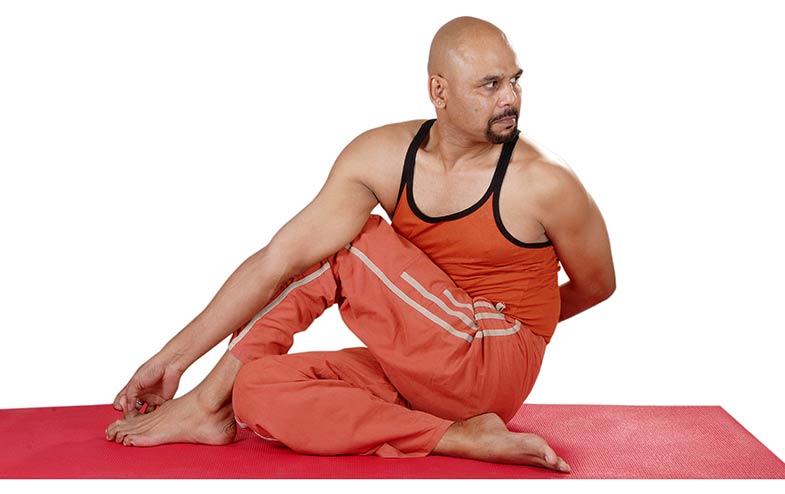
Ardha Matsendrasana.
Sit with your legs stretched out, bend your right leg at the knee and place the heel close to the perineum. Bend the left leg at the knee, and place the left foot by the external side of the right thigh close to the hip joint. The left ankle will remain close to the root of the right thigh. Do not move the right heel from the perineum. Pass your right hand over the left knee by rotating the whole trunk to the left, till your right shoulder and the left knee press against each other catch hold of your left foot or the toe firmly with your right hand. Turn slowly and steadily to the left, swing the left hand back and hold the right thigh at the groin. Turn the neck so that your chin in line with the left shoulders. Keep the chest erect. Remain there for ten seconds repeat the entire procedure by switching leg positions. This will complete the pose, practise once on each side, gradually increasing the holding time to 1 or 2 minutes.
PREVENTIONS: Pregnant women should avoid this practice, people suffering from peptic ulcer, hernia and hyper thyroids should practice this pose under the expert guidance.
4. PACHIMOTTAN ASANA (POSTERIOR, STRETCHING POSE)
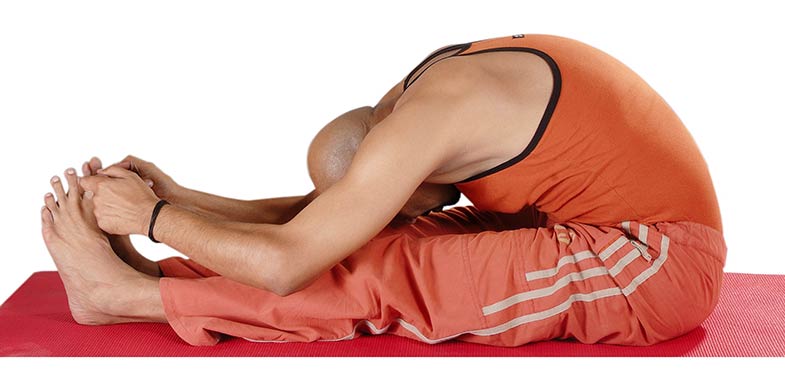
Pachimottanasana.
Sit on the floor with the legs outstretched, feet together and hands on the knees. In hale, and slowly raise your arms head and trunk exhale and bend forward gradually. Try to grasp the big toes with fingers thumbs. Bend further and busy your face between the knees. Hold the position for a few seconds then come to starting position. This one round tries to do minimum up to 5 rounds.
PREVENTION: People who suffer slipped disc or sciatica and pregnant ladies should not perform this asana.
5. BHUJANG ASANA (COBRA POSE)
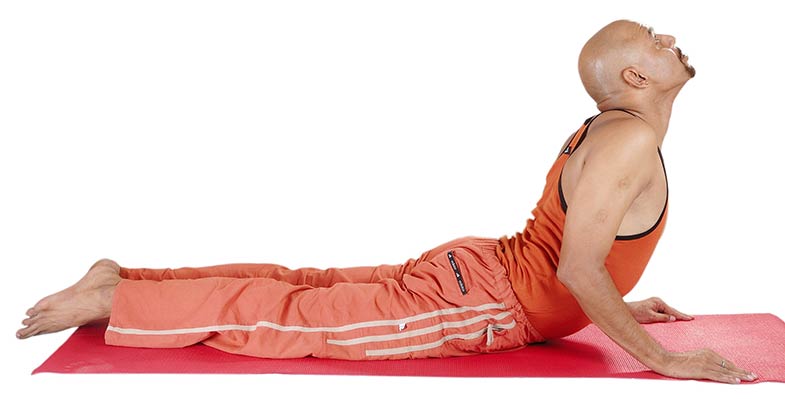
Bhujangsana.
Lie on your stomach with your face down wards and keep your feet together, with soles pointing upwards now inhale, and slowly raise the head, neck and shoulders. Arch your back, thus bending your spine as for as you can, looking upwards. Keep the lower half of your body to the ground. The arms may or may not be straight; this will depend on the flexibility of the back. Maintain this position as long as you are comfortable. To return to the starting position, slowly bring the head forward; release the upper back by bending the arms lower the navel, chest, shoulders and then the forehead to the floor. Relax the lower back muscles. This is one round of this Asana. Try to practice up to 5 rounds, gradually increasing the length of time in the final position.
PREVENTION: People suffering from peptic ulcer, hernia and hyperthyroidism should not practise this Asana.
6. SURABHEDI PRANAYAMA (Vital stimulating break)
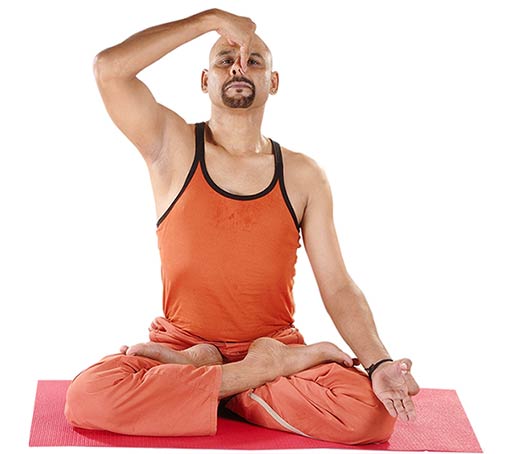
Suryabhedi Pranayama.
Sit down in meditative asana now place the hand on the knees in (Jnana Mudra). Close the eyes and relax the whole body. Then close the eyes and relax the whole body. Then close the left nostril with the ring finger and inhale slowly and deeply through the high nostril. At the end of inhalation close both the nostrils. Maintain for just a few seconds. Then exhale slowly through the right nostril by keeping the left nostril closed with the ring finger. This is one round. To begin with practises do 10 rounds daily. Slowly increase the time up to minutes.
PREVENTION: People suffering from heart disease, epilepsy and hypertension should not practise this pranayama.
There are many known benefits to the regular practice of yoga, which would help to minimize many of the problems associated with ageing. Regular Yoga can help to maintain muscle strength and tone and bone density, joint flexibility, and improve posture, balance and maintain mobility. Combined with pranayama, regular practice can help to maintain circulatory and respiratory health. Yoga has also been shown to be beneficial in the management of stress, anxiety and depression, aiding in the maintenance of mental health.
These above asanas and pranayamas help to decreast the rate of ageing in human body.

